Easy Sourdough Ciabatta Rolls
Ciabatta is rustic Italian bread that’s characterized by its rectangular shape, soft crumb and crispy crust. It’s typically made with a high hydration dough, which helps to achieve an open crumb structure with large air pockets. Ciabatta rolls are ideal for making sandwiches or can be served alongside soups, stews, and appetizer boards.
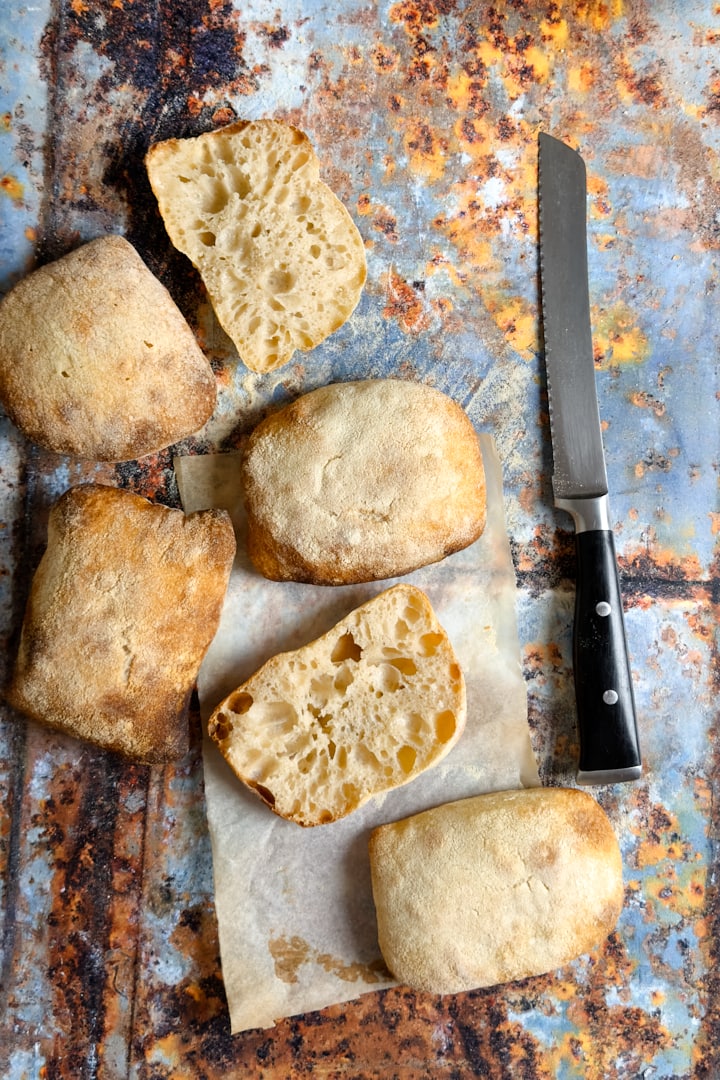
Ingredients and Tools You’ll Need
Step-by-Step Instructions
Step 1
Make the leaven the evening before baking the ciabatta: Mix the sourdough starter with water and stir until it is almost fully dissolved. Add the flour and mix until fully incorporated. Let the leaven rise on the counter overnight until active and doubled in size.
Step 2
The next morning, make the main dough. In a mixing bowl, dissolve the active leaven in the water and add the flour. Mix until a shaggy dough forms. Cover the bowl and let it rest on the counter for 45 – 60 minutes. This allows the flour to fully absorb the water and helps to jumpstart the gluten development.
Step 3
Add the salt and make sure to evenly distribute it throughout the dough. Stretch and fold the dough for a few minutes until it becomes elastic and starts to tighten up a bit. Transfer the dough to a lightly oiled proofing container and let it rise in a warm spot (about 28 °C) for the bulk fermentation.
Step 4
To further develop the gluten network and strengthen the dough, you will perform 6 sets of coil folds (see video below). The first three sets are performed every 15 minutes, and the last three sets are done in 30 minute intervals. After the last coil fold, let the dough rise for three more hours. By the end of the bulk fermentation, the dough should look puffy and airy. If it looks dense, it needs more time to rise.
Step 5
Line a baking tray with parchment paper. Turn the dough out on a floured work surface and also dust the surface of the dough with flour. Using a bench scraper, divide the dough into six rectangular pieces. Gently transfer the dough pieces onto the baking tray. Cover them with a tea towel and let them proof for 1 hour. During the last 30 minutes of the proofing time, pre-heat the oven to 230° C.
Step 6
Bake the ciabatta rolls with steam for the first 10 minutes. Then, briefly open the oven door to vent the steam and finish baking for another 10 – 12 minutes until the crust looks crispy and golden brown. Let the ciabatta rolls cool on a wire rack for at least 30 minutes before slicing.
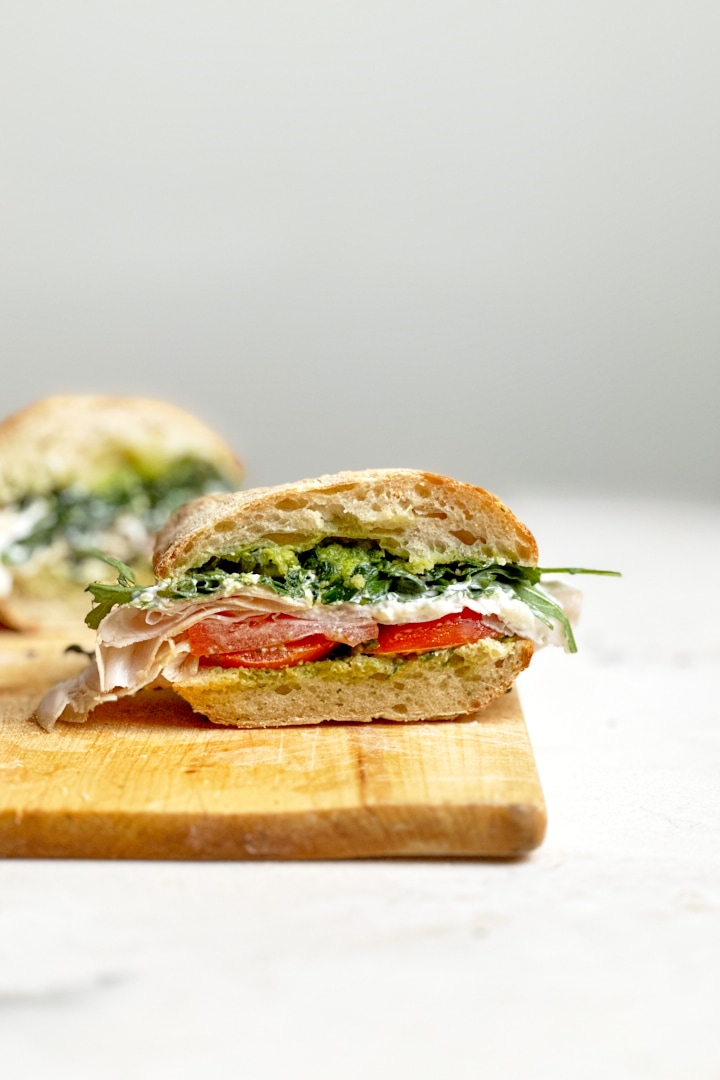
Sample Baking Schedule
Day 1
Day 2
More Sourdough Recipes You May Like:
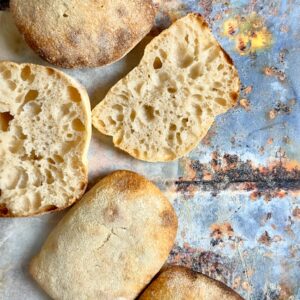
Easy Sourdough Ciabatta Rolls
Equipment
- Digital kitchen scale
- Mixing bowl and proofing container
- Tea towel or plastic bag
- Parchment paper
- bench scraper
Ingredients
For the stiff leaven:
- 30 g Sourdough starter
- 30 g Water
- 60 g Wheat flour
For the main dough:
- 100 g Active leaven – keep the remaining leaven in the fridge and refresh it for the next use
- 310 g Water – lukewarm at about 30° C
- 350 g Strong bread flour – with 12- 14% protein
- 9 g Salt
Instructions
- Make the leaven the evening before baking the ciabatta: Mix the sourdough starter with water and stir until it is almost fully dissolved. Add the flour and mix until fully incorporated. Let the leaven rise on the counter overnight until active and doubled in size.
- The next morning, make the main dough. In a mixing bowl, dissolve the active leaven in the water and add the flour. Mix until a shaggy dough forms. Cover the bowl and let it rest on the counter for 45 – 60 minutes. This allows the flour to fully absorb the water and helps to jumpstart the gluten development.
- Add the salt and make sure to evenly distribute it throughout the dough. Stretch and fold the dough for a few minutes until it becomes elastic and starts to tighten up a bit. Transfer the dough to a lightly oiled proofing container and let it rise in a warm spot (about 28 °C) for the bulk fermentation.
- To further develop the gluten network and strengthen the dough, you will perform 6 sets of coil folds (see video below). The first three sets are done every 15 minutes, and the last three sets are performed in 30 minute intervals (see the sample baking schedule below). After the last coil fold, let the dough rise for three more hours. By the end of the bulk fermentation, the dough should look puffy and airy. If it looks dense, it needs more time to rise.
- Line a baking tray with parchment paper. Turn the dough out on a floured work surface and also dust the surface of the dough with flour. Using a bench scraper, divide the dough into six rectangular pieces. Gently transfer the dough pieces onto the baking tray. Cover them with a tea towel and let them proof for 1 hour. During the last 30 minutes of the proofing time, pre-heat the oven to 230° C.
- Bake the ciabatta rolls with steam for the first 10 minutes. Then, briefly open the oven door to vent the steam and finish baking for another 10 – 12 minutes until the crust looks crispy and golden brown. Let the ciabatta rolls cool on a wire rack for at least 30 minutes before slicing.
Video
Nutrition
Do you have any questions about this recipe?
Let me know in the comments!
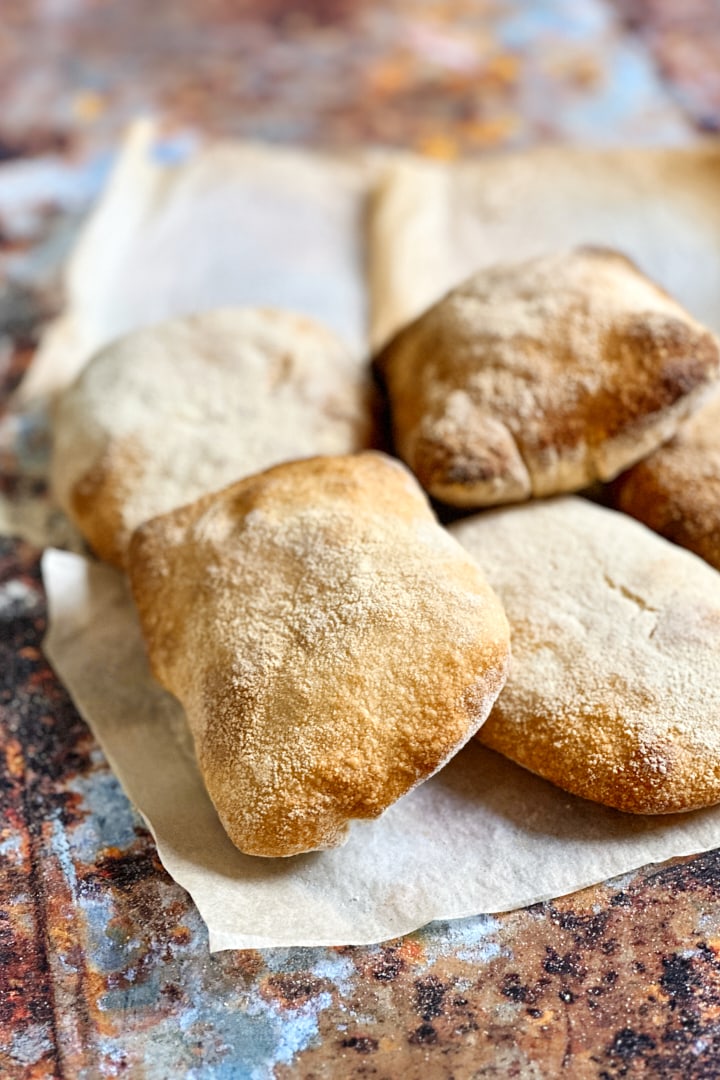


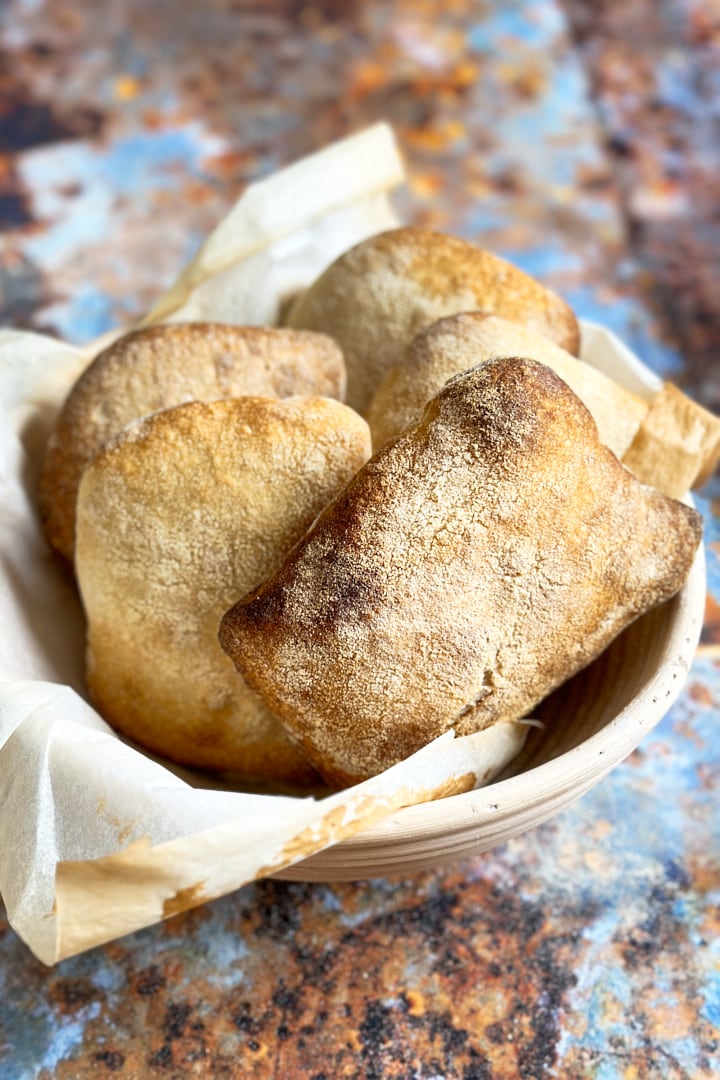
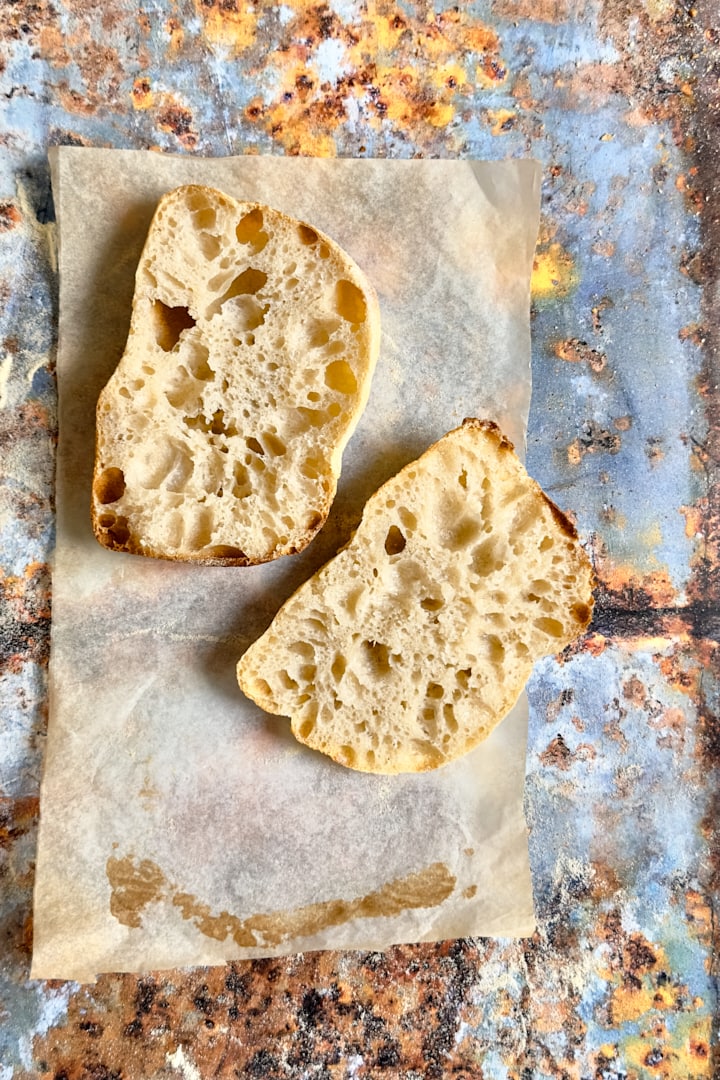
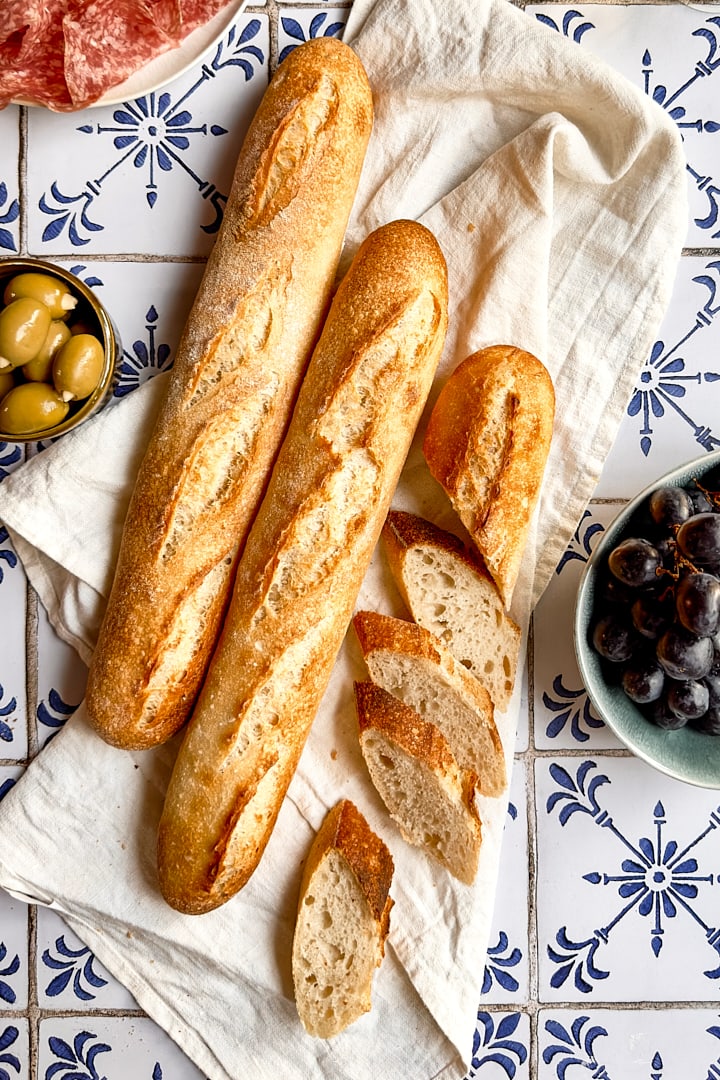
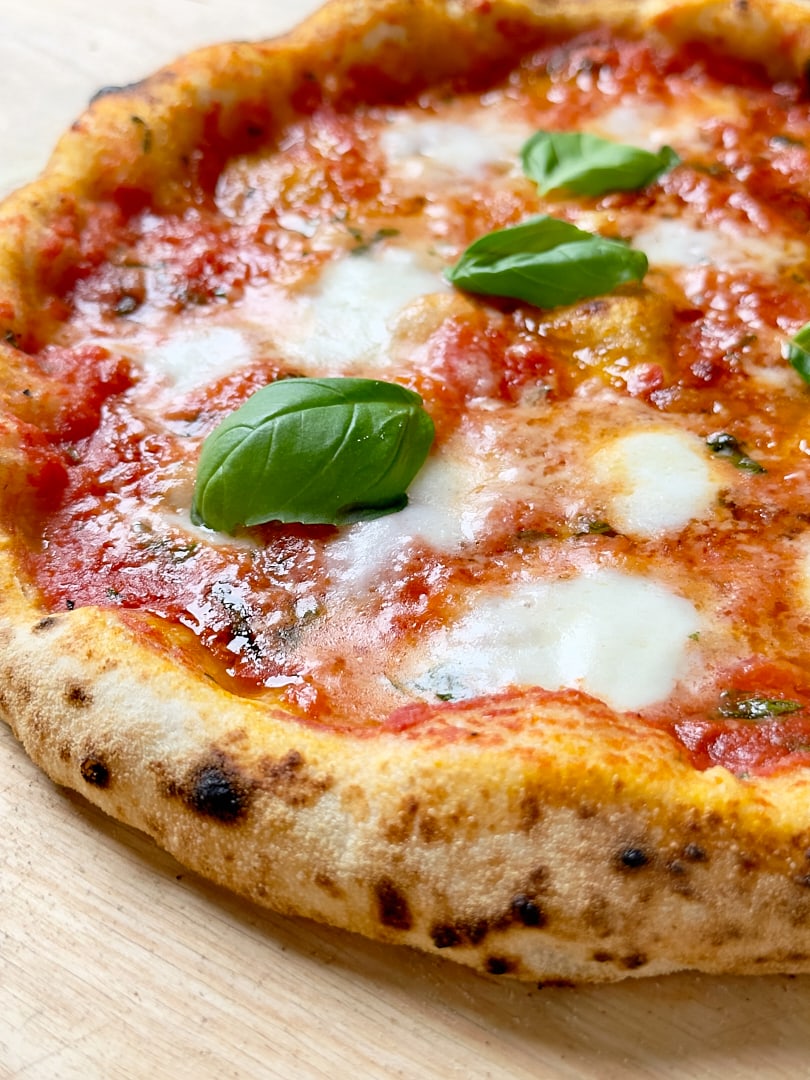

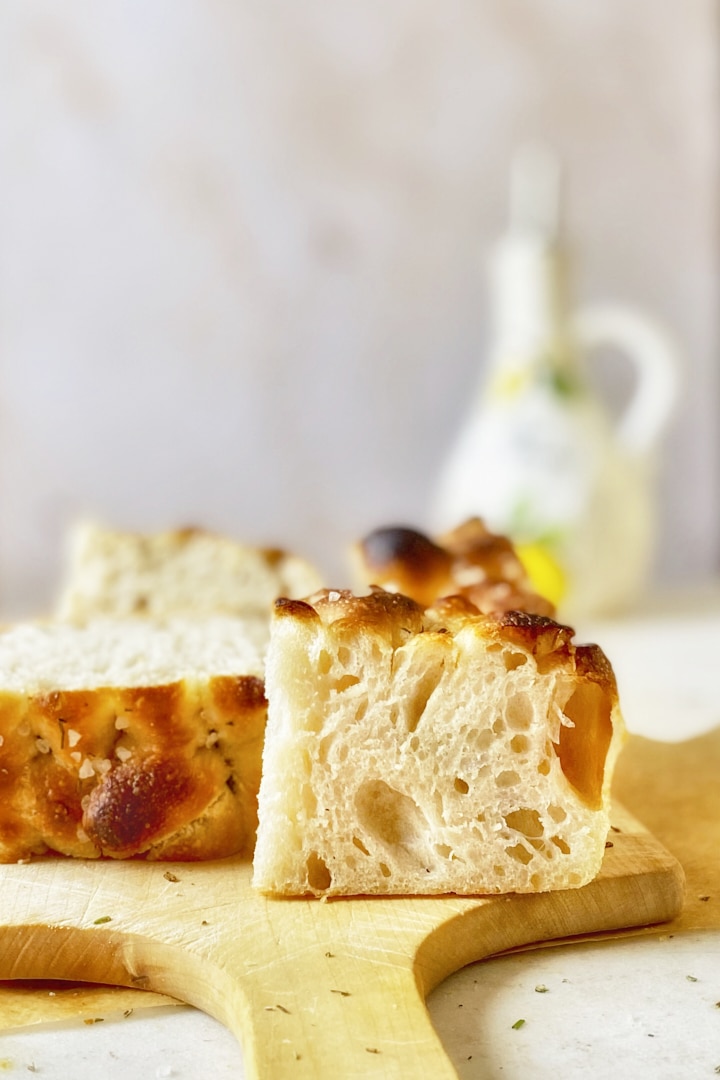
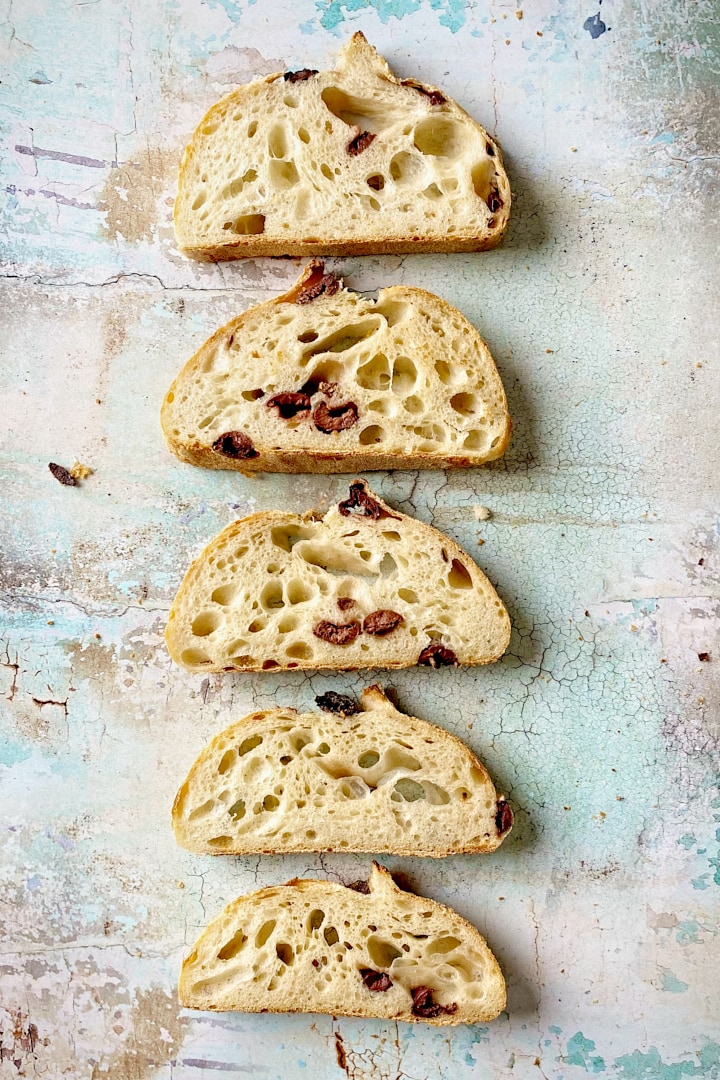
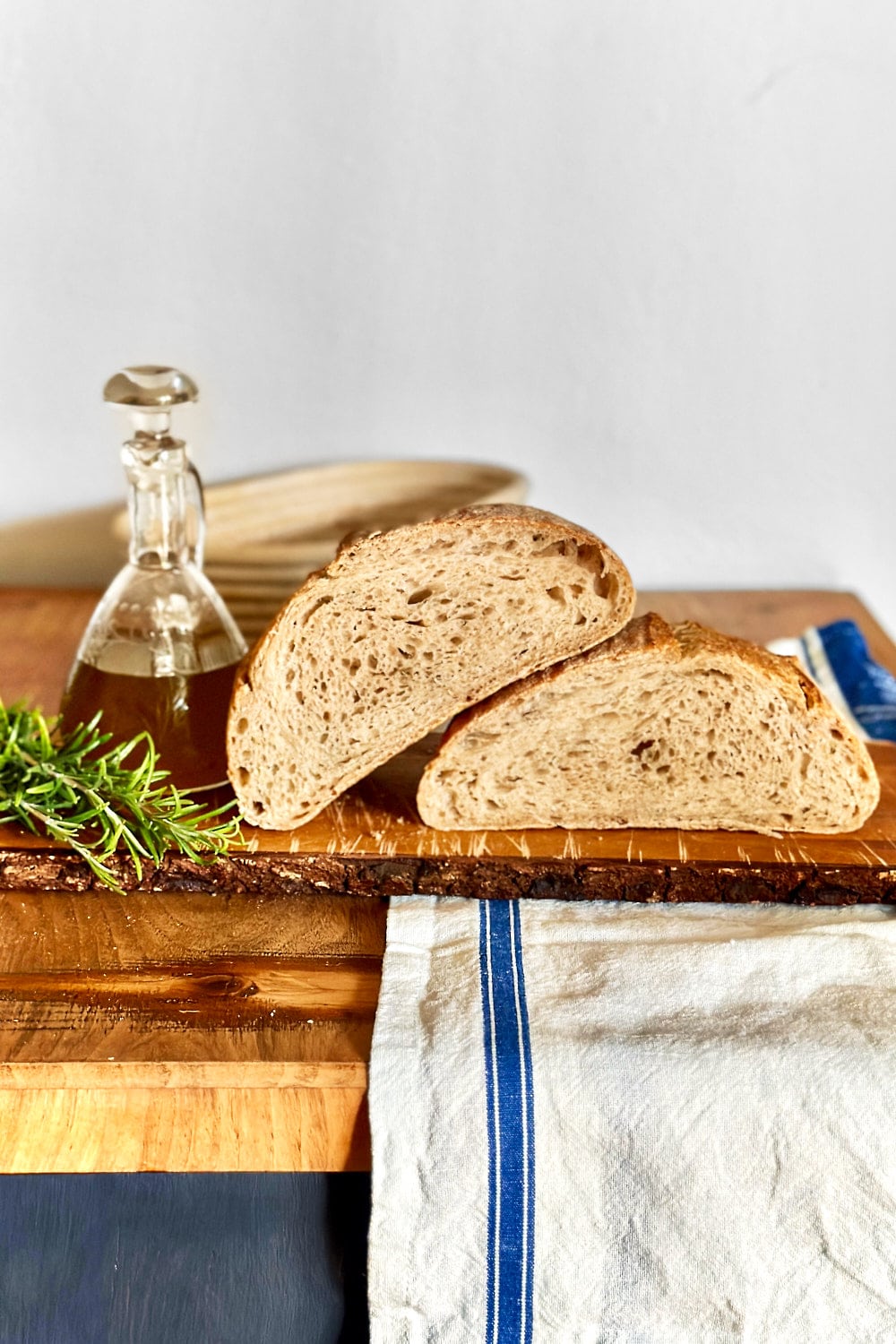

Can I use a good quality AP flour rather than bread flour? Just because that’s what I have at the moment. Looks great! Can’t wait to try them. 😃
Hi Kristy! Yes, AP flour should be fine as long as it has a protein content of at least 11 – 12 %. Happy baking!